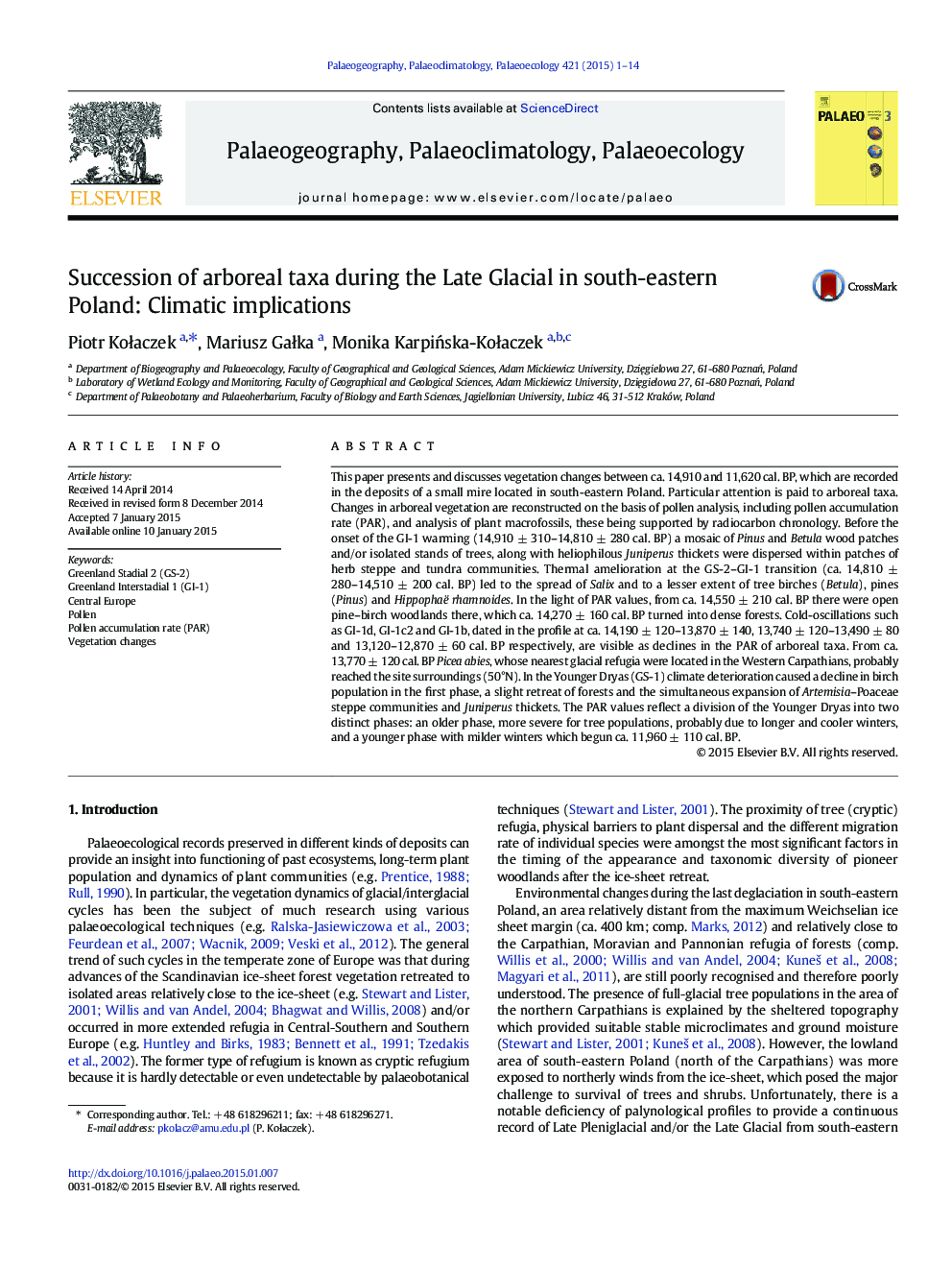| کد مقاله | کد نشریه | سال انتشار | مقاله انگلیسی | نسخه تمام متن |
|---|---|---|---|---|
| 4466027 | 1622169 | 2015 | 14 صفحه PDF | دانلود رایگان |
• Vegetation changes ca. 14,910–11,620 cal. BP in SE Poland were reconstructed.
• Pollen accumulation rate (PAR) revealed similar trends as curve of δ18O NGRIP.
• The trees and shrubs were probably present before the onset of the GI-1.
• The onset of the GS-1 is diachronic in the record of PAR and pollen percentages.
• The pollen record of the GS-1 cold spell revealed two climatic phases.
This paper presents and discusses vegetation changes between ca. 14,910 and 11,620 cal. BP, which are recorded in the deposits of a small mire located in south-eastern Poland. Particular attention is paid to arboreal taxa. Changes in arboreal vegetation are reconstructed on the basis of pollen analysis, including pollen accumulation rate (PAR), and analysis of plant macrofossils, these being supported by radiocarbon chronology. Before the onset of the GI-1 warming (14,910 ± 310–14,810 ± 280 cal. BP) a mosaic of Pinus and Betula wood patches and/or isolated stands of trees, along with heliophilous Juniperus thickets were dispersed within patches of herb steppe and tundra communities. Thermal amelioration at the GS-2–GI-1 transition (ca. 14,810 ± 280–14,510 ± 200 cal. BP) led to the spread of Salix and to a lesser extent of tree birches (Betula), pines (Pinus) and Hippophaë rhamnoides. In the light of PAR values, from ca. 14,550 ± 210 cal. BP there were open pine–birch woodlands there, which ca. 14,270 ± 160 cal. BP turned into dense forests. Cold-oscillations such as GI-1d, GI-1c2 and GI-1b, dated in the profile at ca. 14,190 ± 120–13,870 ± 140, 13,740 ± 120–13,490 ± 80 and 13,120–12,870 ± 60 cal. BP respectively, are visible as declines in the PAR of arboreal taxa. From ca. 13,770 ± 120 cal. BP Picea abies, whose nearest glacial refugia were located in the Western Carpathians, probably reached the site surroundings (50°N). In the Younger Dryas (GS-1) climate deterioration caused a decline in birch population in the first phase, a slight retreat of forests and the simultaneous expansion of Artemisia–Poaceae steppe communities and Juniperus thickets. The PAR values reflect a division of the Younger Dryas into two distinct phases: an older phase, more severe for tree populations, probably due to longer and cooler winters, and a younger phase with milder winters which begun ca. 11,960 ± 110 cal. BP.
Journal: Palaeogeography, Palaeoclimatology, Palaeoecology - Volume 421, 1 March 2015, Pages 1–14
